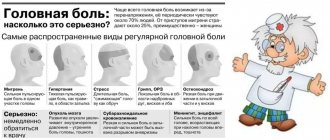Among personality disorders, a special place is occupied by a condition that experts call mild mania. Hypomania is manifested by excessive cheerfulness and energy. Against the background of high spirits, a person feels a surge of physical and mental strength, but at the same time he is overly irritable and even angry.
This disorder differs from mania in the absence of psychotic symptoms such as delusions and hallucinations. Hypomanic states can occur for various reasons, but most often hypomania is explained by the peculiarities of bipolar disorder.
Symptoms of the disorder
The main symptoms of hypomania include excessive talkativeness, social activity, obsession with one's professional activities and obvious inadequacy of statements and judgments. However, there are two types of this disorder, each of which has specific symptoms and causes of development.
Pure hypomania occurs with pronounced symptoms and is usually accompanied by increased aggressiveness:
- In professional activities, an obsession with a certain project or idea often arises, while the person always seems that those around him are trying to hinder or harm him. Hypomania does not allow a person to concentrate; he is often distracted by extraneous noises or conversations of people nearby. As a result, the patient becomes irritated and angrily expresses his dissatisfaction.
- Against the background of attacks of impatience with other people, patients with hypomania develop a need for constant communication. If harsh words offend someone, then the person will be the first to start a conversation, demonstrate exaggerated gaiety, give advice, make fun of colleagues or friends, encourage everyone to have a party, etc. The patient's behavior often seems too familiar to others.
- Hypomania is characterized by a lack of sleep. The patient is too passionate about a certain idea, he strives to do everything at once, so he often works at night. The productivity of such work is usually not high; a person does several things at the same time, without bringing any of them to completion.
- The patient's self-esteem is prohibitively high, he does not listen to the advice of others, and reacts negatively to constructive criticism. Most of his actions are frivolous, and his judgments are rather superficial.
The latent form of the disorder manifests itself in a similar way, with the only difference being that the person is less aggressive. The patient is also passionate about work, he practically does not sleep, feels the need to communicate, but less often enters into conflicts with others. A person with this form of disorder is almost always in a good mood and experiences unjustified optimism. People say about such individuals: “I put on rose-colored glasses.” A person does not pay attention to negative forecasts, difficulties do not cause fear, he takes on the most difficult tasks. However, the work he started will never be completed.
Other manifestations of both types of hypomania include:
- greatly increased appetite, in some cases a person begins to suffer from outright gluttony;
- a sharp increase in sexual attraction to the opposite sex;
- craving for various forbidden pleasures and alcohol;
- a tendency to make unnecessary purchases develops, a person becomes wasteful, and shopping addiction arises.
People suffering from hypomania say that they have too much internal energy and urgently need to put it somewhere. Many of them note that they experience impatience and internal trembling; tremors in the hands and twitching of the eyelids often occur.
What are the dangers of hypomania?
A large number of people do not pay due attention to hypomania and excessive activity. It seems to them that this ability to find time for work, and for communication, and for
entertainment is a character trait bestowed upon man from above. Indeed, there is nothing wrong with a person experiencing happiness at a certain point in his life, but this should not harm his health: physical and mental.
Bipolar disorder, the phase of which is hypomania, requires mandatory treatment, since manic hyperactivity will invariably lead to exhaustion of the body, the development of apathy and depression, and a decrease in the quality of life.
The dangers of hypomania are as follows:
- Lack of sleep causes fatigue to accumulate in the body. The patient loses the ability to focus and concentrate, and his memory deteriorates. If you refuse sleep and proper rest for a long time, “fog” appears in your head and constant drowsiness occurs.
- Overeating, consuming large quantities of fatty and fried foods lead to a person storing excess fat and becoming obese, as well as developing vitamin deficiency. Against the background of these diseases, there is a decrease in the body’s defenses and an exacerbation of existing chronic diseases.
- Frivolity and wastefulness invariably lead to financial problems and other difficulties in life. The patient is prevented from correcting the situation by the onset of apathy; he cannot pull himself together and do something to solve the problems that have arisen.
- A few days of excessive activity are followed by periods of depression that can last several months. The longer the attack of hypomania, the more difficult it is for a person to cope with a decadent mood subsequently.
A person in a hypomanic state is unable to adequately perceive the reality around him; he gradually loses the ability to control his own life, constantly comes into conflict with others and spoils relationships with them.
Hypomania often develops in creative people. There are cases when writers, composers or artists experienced inspiration for several months, allowing them to create real masterpieces. But the period of creative growth was certainly replaced by a breakdown and depression.
Some of them tried to regain lost inspiration with the help of alcohol or drugs, but this only worsened the situation. This is another danger of hypomania. A person strives by any means to regain the energy he has lost, and this can lead to unpredictable consequences.
Reasons for development
Many of us have found ourselves in situations where we need to give it our all. In an effort to finish work on time, a person without mental disorders may also become hyperactive. But after the project is completed, he will try to rest and get some sleep. The presence of pathology may be indicated by a person’s inability to relax; he is unable to force himself to rest.
Pathological hyperactivity can occur for several reasons:
- As a result of hormonal imbalance, the main symptoms of hypomania can be observed. Mood disorders occur when the thyroid gland is not functioning properly. In addition, hypomania can occur in women after childbirth or during menopause;
- short-term episodes of hypomania can occur against the background of eating disorders or fasting for the purpose of recovery. Elation occurs against the background of food excitement;
- Hypomanic behavior may result from the use of certain pharmacological agents. Baclofen, bromine-containing drugs, opiates, corticosteroids, and hallucinogens can lead to such consequences. Episodes of hypomania can also develop against the background of abrupt withdrawal from antidepressants;
- mood can become pathologically high due to the use of large doses of all kinds of stimulants and narcotics (coffee, energy drinks, cocaine, etc.);
- hypomania may be a consequence of organic brain damage caused by various neuroinfections and injuries;
- The most likely cause of episodes of mild mania is a personality disorder called bipolar disorder (BD). Hypomania is one of the phases of this disorder. Why some people develop bipolar disorder is still not completely clear, but a relationship has been established between hereditary factors and the likelihood of this disorder.
Hypomania can be an independent pathology, but in some cases such conditions are a background or component of other (for example, hysterical and psychosomatic) disorders. The success of therapy depends on how accurately the doctor determines the reasons that led to such inappropriate behavior of the patient.
Types of mania
Mood disorders have been studied since the 5th century BC. Hippocrates identified borderline states - mania and melancholy. At the end of the 19th century, E. Kraepelin put forward the concept according to which all behavioral disorders were classified as manic-depressive psychosis (MDP).
Throughout the twentieth century, this concept was considered basic, and only recently have behavioral disorders received a more detailed classification. First of all, it was pointed out that there are two main types of TIR:
- Episodes of depression are replaced by mania and inappropriately elevated mood, which entails mental disorders.
- Depression can alternate with hypomania, in which mood elevations are not associated with serious mental disorders.
The modern classification of diseases ICD-10 distinguishes three degrees of mania, the mildest of which is hypomania. It is followed by mania without psychotic symptoms and mania that is manifested by psychotic symptoms.
Hypomania, in turn, is also classified according to several criteria:
- Based on the degree of predominance of some symptoms of the disorder, hypomania can be simple, it is also called cheerful, irritable or angry, as well as expansive;
- division into types can be carried out based on the type of disorders accompanying an episode of mild mania. When there is a tendency to litigiousness, hypomania is called querulant; there is also an opportunistic and dysphoric form of pathology;
- Based on their severity of symptoms, hypomania is divided into obvious or pure, as well as hidden, when the symptoms are less pronounced.
Hypomania can affect the psychosomatic sphere, in which case euphoric hypochondria develops. A person in such a state directs all his energy to actively fight an imaginary illness.
Psychotic mania (manic psychosis)
Mania can range in severity from hypomania to severe mania with psychotic symptoms.
Ideas of grandeur and heightened self-esteem can develop into delusions, and irritability and suspicion can develop into delusions of persecution. In severe cases, pronounced delusional ideas of greatness or noble origin are noted. As a result of racing thoughts and speech pressure, speech becomes incomprehensible.
| “Psychotic symptoms can be congruent with affect or incongruent. Psychotic symptoms congruent with affect are, for example, manic delusions of grandeur, of a special origin or “voice” informing the patient about his “superhuman abilities”, etc. Incongruent - may include affectively neutral hallucinations, delusions of relation without elements, delusions of meaning or persecution , “voices” talking with the patient about events that have no emotional significance, etc.” Federal clinical guidelines for the diagnosis and treatment of bipolar affective disorder in adults. Mosolov S.N., Kostyukova E.G., Tsukarzi E.E. November 2013 |
Diagnostics
The main problem associated with the treatment of hypomania is that the patients themselves, at the time of an attack of mania, do not realize the severity of their condition. Only a few of them try to get qualified help at a time of low mood and loss of strength. And then doctors have to deal with the consequences of the disorder.
We can talk about the presence of hypomania only when the word “episode” can be applied to the patient’s condition. That is, the symptoms of the disorder must be present in a person for at least four days. In this case, at least three manifestations of the following must be recorded:
- Excessive activity manifests itself in the desire to constantly do something and go somewhere.
- Talkativeness or talkativeness.
- Difficulty concentrating, the person cannot maintain attention, he is easily distracted.
- Pathological need for constant communication, familiarity.
- Nymphomania in women and satyriasis in men.
- Reduced need for sleep, longer periods of wakefulness.
- Reckless behavior that is unusual for a given person outside of an episode of hypomania. Irresponsibility.
If some of these manifestations are present, a doctor can diagnose a hypomanic episode, but his main task is to identify the causes that triggered the disorder. Therefore, it is necessary to apply a differential approach to diagnosis.
There is also a special test for hypomania, consisting of 32 questions. This disorder is diagnosed if the patient answers positive to at least 14 of them.
How is hypomania treated?
Not all hypomanic conditions require treatment. In some cases, isolation from external stimuli and proper sleep can restore normalcy. The following therapeutic measures are used to treat hypomania:
- Physiotherapy.
- Pharmacotherapy (motor stabilizers, neurometabolic therapy, antipsychotics).
- Diet therapy.
- Biofeedback therapy.
Treatment of a manic state is possible in a hospital
, and at home.
The hypomanic state may itself end with a return to normal mood. In some cases, hypomania develops into a more severe painful disorder - a manic state.
Treatment
Treatment of hypomania with the help of pharmacological agents consists of eliminating the causes that led to the mood disorder. Can lead to a sharp emotional upsurge
intoxication with substances and drugs with psychotropic effects, in this case it will be necessary to neutralize their negative effects. It will be mandatory to take medications in the presence of hormonal imbalance and thyroid dysfunction.
When hypomania is part of bipolar disorder, the most effective treatment is psychotherapy. In their work, specialists can use any methods available to them aimed at relaxation and awareness of problems. Hypomania is a kind of depression with reverse potential, therefore the approach to correcting this condition is based on the same principles. During psychotherapy, it is necessary to correct behavior and create a favorable emotional state.
Self-regulation of the affective sphere by the patient is of great importance in achieving a positive effect from treatment. Biofeedback sessions, self-stimulation, transcranial magnetic stimulation, as well as behavioral therapy methods help to obtain such skills.
Despite the fact that hypomania does not cause obvious harm to health and does not limit physical performance, its negative impact on a person should not be underestimated. If you do not pay due attention to the treatment of this seemingly mild disorder, then your quality of life will gradually decrease. Pathological tendencies and bad habits may develop, and periods of low mood will lead to depression, which may lead to suicidal tendencies.
Features of the course in children
Not only adults face a problem such as hypomania. Some children also have this problem, which manifests itself in the following:
- impulsiveness, lack of self-control;
- antics and involuntary reproduction of various sounds;
- rudeness;
- fussiness, inconsistency of actions;
- quickly transferring attention from an object to another (one type of activity quickly gets boring);
- rapid speech (the child “swallows” half the words);
- sleep problems
Some of the above signs are also characteristic of the lives of healthy children. Increased attention should be paid if the symptoms do not stop and appear in an exaggerated form.
A sick child often grimaces and cannot concentrate











